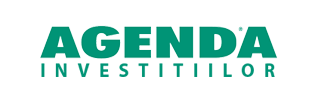 In the current international context, where great emphasis is placed on the sustainability concept, particularly on issues related to energy efficiency and environmental protection, mineral wool is a construction material that is placed in the spotlight of the specialists. This is due to both the high degree of insulation and the way the product is manufactured. There are numerous studies on the best manufacturing methods, the experts trying to assess precisely how the use of alternative raw materials, industrial waste etc. can help strengthen the specific characteristics and encourage a sustainable development. To identify the best solutions in order to obtain optimal products, it requires a thorough check of the physic-chemical properties of the elements in the recipe, which ensures the desired results. Mineral wool is an inorganic product containing no metal, made from volcanic rock (basalt or dolerite), blast furnace slag and steel slag (which have a share of 97% in the structure of the material). The difference is represented by the organic content, generally being used adhesive (binder) based on thermosetting resins and oils. In the production process, the mineral elements are mixed in an oven at a temperature of about 1500°C. The slag has the purpose to facilitate the flow of material and the melting temperature decrease. The fuel used has a high calorific value, usually using coke. The mixture obtained after the homogenization and cooling is twisted so as to obtain a fibrous structure of the final product. Mineral wool can have different densities which give different physical properties. The main element that stimulates activity in the production of mineral wool is related to energy efficiency of buildings, but an increasing emphasis is currently placed on sound insulation (especially floors and partitioning elements of enclosures). According to recent studies, due to increased demand for thermal insulating solutions, the market is dominated, at least in the industrialized states, by mineral wool products in some countries the market share reaching almost 50%, followed at some distance by high density polyurethane foam (20% - 25%) and expanded polystyrene (EPS) with 10% - 15%.
In the current international context, where great emphasis is placed on the sustainability concept, particularly on issues related to energy efficiency and environmental protection, mineral wool is a construction material that is placed in the spotlight of the specialists. This is due to both the high degree of insulation and the way the product is manufactured. There are numerous studies on the best manufacturing methods, the experts trying to assess precisely how the use of alternative raw materials, industrial waste etc. can help strengthen the specific characteristics and encourage a sustainable development. To identify the best solutions in order to obtain optimal products, it requires a thorough check of the physic-chemical properties of the elements in the recipe, which ensures the desired results. Mineral wool is an inorganic product containing no metal, made from volcanic rock (basalt or dolerite), blast furnace slag and steel slag (which have a share of 97% in the structure of the material). The difference is represented by the organic content, generally being used adhesive (binder) based on thermosetting resins and oils. In the production process, the mineral elements are mixed in an oven at a temperature of about 1500°C. The slag has the purpose to facilitate the flow of material and the melting temperature decrease. The fuel used has a high calorific value, usually using coke. The mixture obtained after the homogenization and cooling is twisted so as to obtain a fibrous structure of the final product. Mineral wool can have different densities which give different physical properties. The main element that stimulates activity in the production of mineral wool is related to energy efficiency of buildings, but an increasing emphasis is currently placed on sound insulation (especially floors and partitioning elements of enclosures). According to recent studies, due to increased demand for thermal insulating solutions, the market is dominated, at least in the industrialized states, by mineral wool products in some countries the market share reaching almost 50%, followed at some distance by high density polyurethane foam (20% - 25%) and expanded polystyrene (EPS) with 10% - 15%.ABONARE REVISTA (click aici): PROIECTE | INVESTITII | REVISTE | INDEX COMPANII
DATE DE CONTACT: Agenda Constructiilor & Fereastra - Tel: 021-336.04.16





